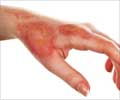A new study has found that a commonly used cream for treating burns may actually delay healing.
A new study has found that a commonly used cream for treating burns may actually delay healing.
Also, despite the wide range of wound dressings available for burns, there is no consensus on the most effective alternative treatment, say Cochrane Researchers who carried out a systematic review of existing data.Increased understanding of the wound healing process means that there are now a large number of different ways to treat burns. Films, gels, artificial skins and fibre dressings may all help to heal wounds, but doctors still often turn to traditional gauze dressings, as well as silver sulphadiazine (SSD) cream.
Healthcare providers have used SSD cream since the 1960s to minimize the risk of burns becoming infected, although concerns have recently been raised about its toxic effects on skin cells.
The Cochrane Team who carried out the research found 26 relevant trials.
Although each trial was relatively small they concluded that SSD cream increases the time taken for a wound to heal, as well as increasing the number of dressing applications required.
"We think that the use of SSD cream on burn wounds needs to be reconsidered," says lead researcher, Jason Wasiak, who works for the Victorian Adult Burns Service at the Alfred Hospital in Melbourne, Australia.
As well as reducing healing times, some alternative dressings also reduced pain associated with burns.
Source-ANI
RAS/L
 MEDINDIA
MEDINDIA




 Email
Email





